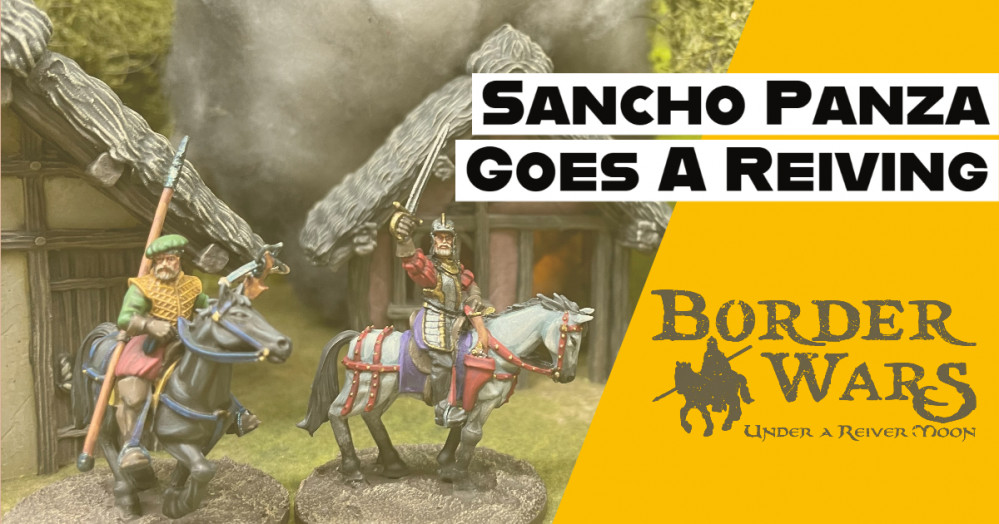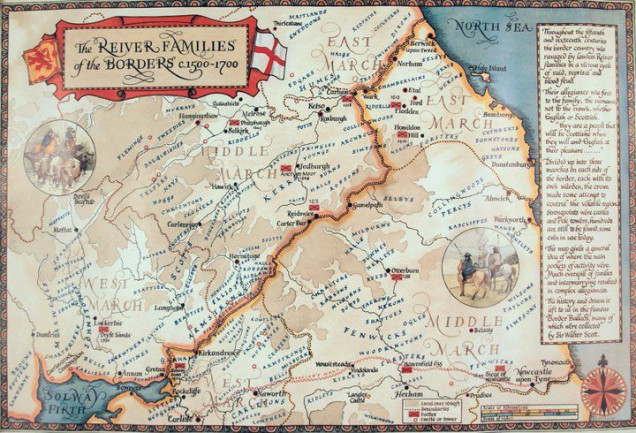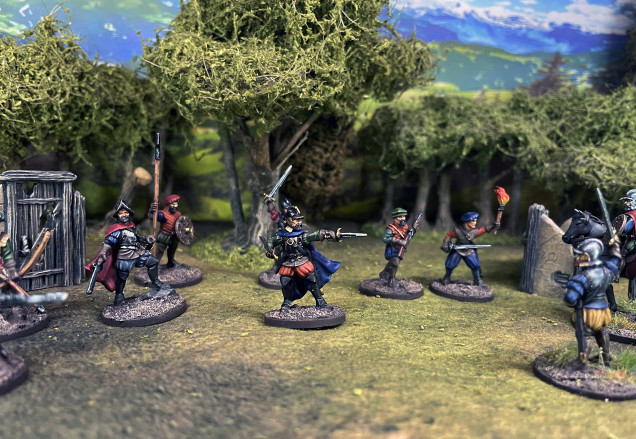
Sancho Panza goes to the Border Wars
Border surnames and clans
A variety of terms describe the Border families, such as the “Riding Surnames” and the “Graynes” thereof. This can be equated to the system of the Highland Clans and their septs. e.g. Clan Donald and Clan MacDonald of Sleat, can be compared with the Scotts of Buccleuch and the Scotts of Harden and elsewhere. Both Border Graynes and Highland septs, however, had the essential feature of patriarchal leadership by the chief of the name, and had territories in which most of their kindred lived. Border families did practice customs similar to those of the Gaels, such as tutorship when an heir who was a minor succeeded to the chiefship, and giving bonds of manrent.
In an Act of the Scottish Parliament of 1587 there is the description of the “Chiftanis and chieffis of all clannis … duelland in the hielands or bordouris” – thus using the words ‘clan’ and ‘chief’ to describe both Highland and Lowland families. The act goes on to list the various Border clans. Later, Sir George MacKenzie of Rosehaugh, the Lord Advocate (Attorney General), writing in 1680 said “By the term ‘chief’ we call the representative of the family from the word chef or head and in the Irish (Gaelic) with us the chief of the family is called the head of the clan”. Thus, the words chief or head, and clan or family, are interchangeable. It is therefore possible to talk of the MacDonald family or the Maxwell clan. The idea that Highlanders should be listed as clans while the Lowlanders are listed as families originated as a 19th-century convention.
Surnames in the Marches of Scotland (1587)
In 1587 the Parliament of Scotland passed a statute: “For the quieting and keping in obiedince of the disorderit subjectis inhabitantis of the borders hielands and Ilis.” Attached to the statute was a Roll of surnames from both the Borders and Highlands. The Borders portion listed 17 ‘clannis’ with a Chief and their associated Marches:
Regions of the Scottish marches
Middle March
Elliot, Armstrong, Nixon, Crozier
West March
Scott, Bates, Little, Thompson, Glendenning, Irvine, Bell, Carruthers, Graham, Johnstone, Jardine, Moffat, and Latimer.
Of the Border Clans or Graynes listed on this roll, Elliot, Carruthers, Scott, Irvine, Graham, Johnstone, Jardine and Moffat are registered with the Court of Lord Lyon in Edinburgh as Scottish Clans (with a Chief), others such as Armstrong, Little and Bell are armigerous clans with no Chief, while such as Clan Blackadder, also an armigerous clan in the Middle Ages, later died out or lost their lands, and are unregistered with the Lyon Court.
The historic riding surnames recorded by George MacDonald Fraser in The Steel Bonnets (London: Harvill, 1989) are:
East March
Scotland: Hume, Trotter, Dixon, Bromfield, Craw, Cranston.
England: Forster, Selby, Gray, Dunn.
Middle March
Scotland: Burns, Kerr, Young, Pringle, Davison, Gilchrist, Tait of East Teviotdale. Scott, Oliver, Turnbull, Rutherford of West Teviotdale. Armstrong, Croser, Elliot, Nixon, Douglas, Laidlaw, Routledge, Turner, Henderson of Liddesdale.
England: Anderson, Potts, Reed, Hall, Hedley of Redesdale. Charlton, Robson, Dodd, Dodds, Milburn, Yarrow, Stapleton of Tynedale. Also Fenwick, Ogle, Heron, Witherington, Medford (later Mitford), Collingwood, Carnaby, Shaftoe, Ridley, Stokoe, Stamper, Wilkinson, Hunter, Huntley, Thompson, Jamieson.
West March
Scotland: Bell, Irvine, Johnstone, Maxwell, Carlisle, Beattie, Little, Carruthers, Glendenning, Routledge, Moffat.
England: Graham, Hetherington, Musgrave, Storey, Lowther, Curwen, Salkeld, Dacre, Harden, Hodgson, Routledge, Tailor, Noble.
Relationships between the Border clans varied from uneasy alliance to open, deadly feud. It took little to start a feud; a chance quarrel or misuse of office was sufficient. Feuds might continue for years until patched up in the face of invasion from the other kingdoms or when the outbreak of other feuds caused alliances to shift. The border was easily destabilised if Graynes from opposite sides of the border were at feud. Feuds also provided ready excuse for particularly murderous raids or pursuits.
Riders did not wear identifying tartans. The tradition of family tartans dates from the Victorian era and was inspired by the novels of Sir Walter Scott. The typical dress of reivers included Jack of plate, steel bonnets (helmets), and riding boots.













































































Leave a Reply